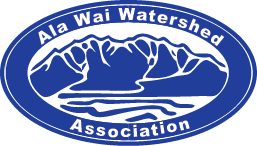The ancient Hawaiians worked hard to care for their environment. Two days out of ten, they worked under chiefs on community projects, many of which could only be performed well by large groups of people in a cooperative effort.
They cleaned the streams and auwai of boulders, trees, and grass. They weeded paths and leveled trails. They built and maintained fishponds.
To manage resources well, boundaries were set to physically divide one land area from another. Boundaries marked the limits of one district’s responsibilities and rights from its neighbors. Boundaries defined sections of land called ahupuaa. Most ahupuaa extended from mountain peaks down to ocean fisheries and beyond.
Within an ahupuaa, all necessities of life were found. From the uplands—mauka—came medicinal herbs, grasses for thatching, fiber for cordage, and fi rewood. From the midland —kula—came the crops and from the stream beds came the stones for foundations and walls. From the shoreline, reefs, and open ocean—makai—came the fish and protein foods.
Throughout the ahupuaa coursed the water, carefully tended to provide for human needs and the taro loi. So important was the prudent use of water that abuses were punished by banishment or death.
The ancient Hawaiians cared for the land, the water, and near-shore ocean. In return, the earth sustained them in a self-sufficient manner. It was known that maintaining resources in the uplands largely restored the resources at the shore to a sound, ecological balance. Neglect of the uplands wreaked havoc on shoreline and ocean environs. The kupuna understood that one system folded neatly into every other, for they all functioned as parts of a whole.
Today, we have a place where the self-sustaining harmony between man and nature is interrupted by homes, high rises, and highways. Water still remains a precious resource from mountains to sea. Only by protecting our upland watersheds, clearing midland pollution in our streams, and caring for our shoreline resources can we hope to restore health and balance.
